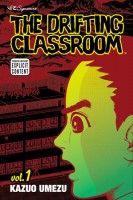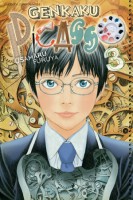The end of the January is drawing near, which means it’s time for the first manga giveaway of the year! In my excitement for its release, I accidentally managed to end up with two copies of the second omnibus of Makoto Yukimura’s Vinland Saga. But my mistake is your gain—this month, you all have the opportunity two win a brand new copy of the volume! Already it’s one of my favorite manga of the year. As always, the giveaway is open worldwide.
So, where I currently live in Michigan, it has been an extremely cold and snowy winter. It’s seems oddly appropriate then that Vinland Saga, Omnibus 2, with the snowstorm on its cover, was released this season. Perhaps it shouldn’t be too surprising, seeing as the series is about Vikings and all, but there’s actually quite a bit of snow in Vinland Saga. It’s not just there to look pretty or save on inking, either. Snow, and winter, has a significant impact on the story itself as battles are waged in the cold and people going about their day-to-day lives simply try to survive the elements. This got me to thinking about other manga that I’ve read in which snow plays an important role. CLAMP’s Shirahime-Syo: Snow Goddess Tales, series like Baku Yumemakura and Jiro Taniguchi’s The Summit of the Gods, and some of the stories in Yuki Urushibara’s Mushishi immediately spring to mind, but there are definitely more snowy manga out there.
So, you may be wondering, how can you win a copy of Vinland Saga, Omnibus 2?
1) In the comments below, tell me about your favorite scene in a manga that either involved or was set in snow.
2) If you’re on Twitter, you can earn a bonus entry by tweeting about the contest. Make sure to include a link to this post and @PhoenixTerran (that’s me).
It’s really that easy. For this giveaway, each person can earn up to two entries. There will be one week to submit comments. Entries may also be sent via e-mail to phoenixterran(at)gmail(dot)com and I will post them in your name. The giveaway winner will be randomly selected and announced on February 5, 2014. Best of luck to you all!
VERY IMPORTANT: Include some way that I can contact you. This can be an e-mail address, a link to your website, Twitter username, or whatever. If I can’t figure out how to get a hold of you and you win, I’ll just draw another name.
Contest winner announced—Manga Giveaway: Vinland Saga Giveaway Winner








